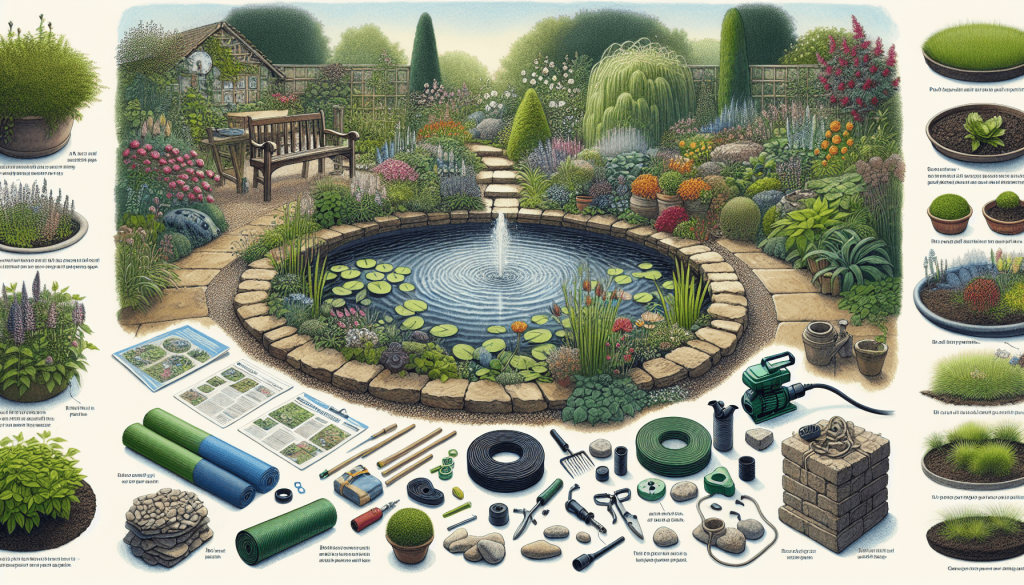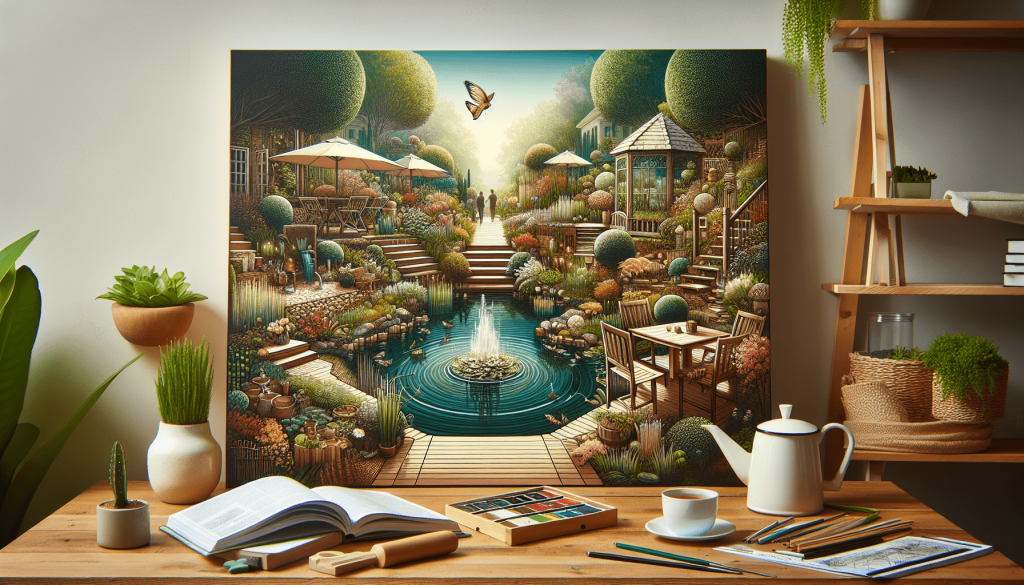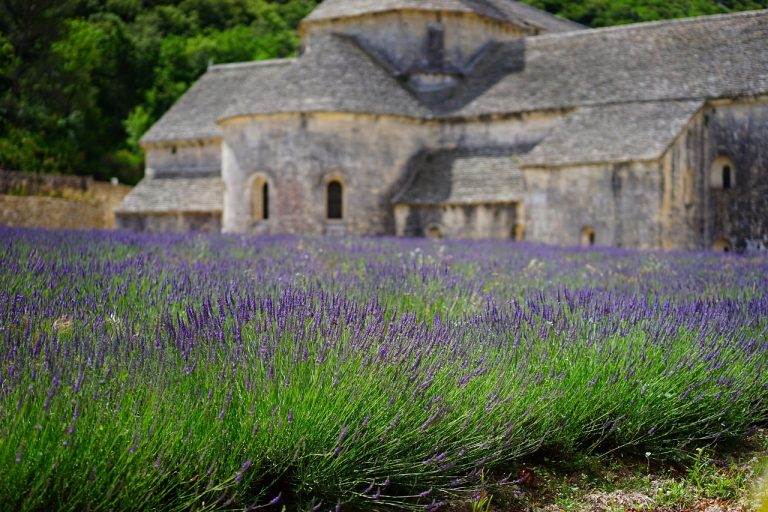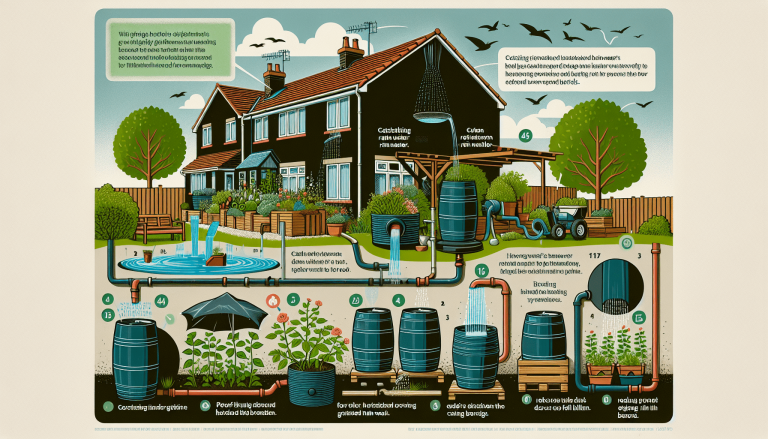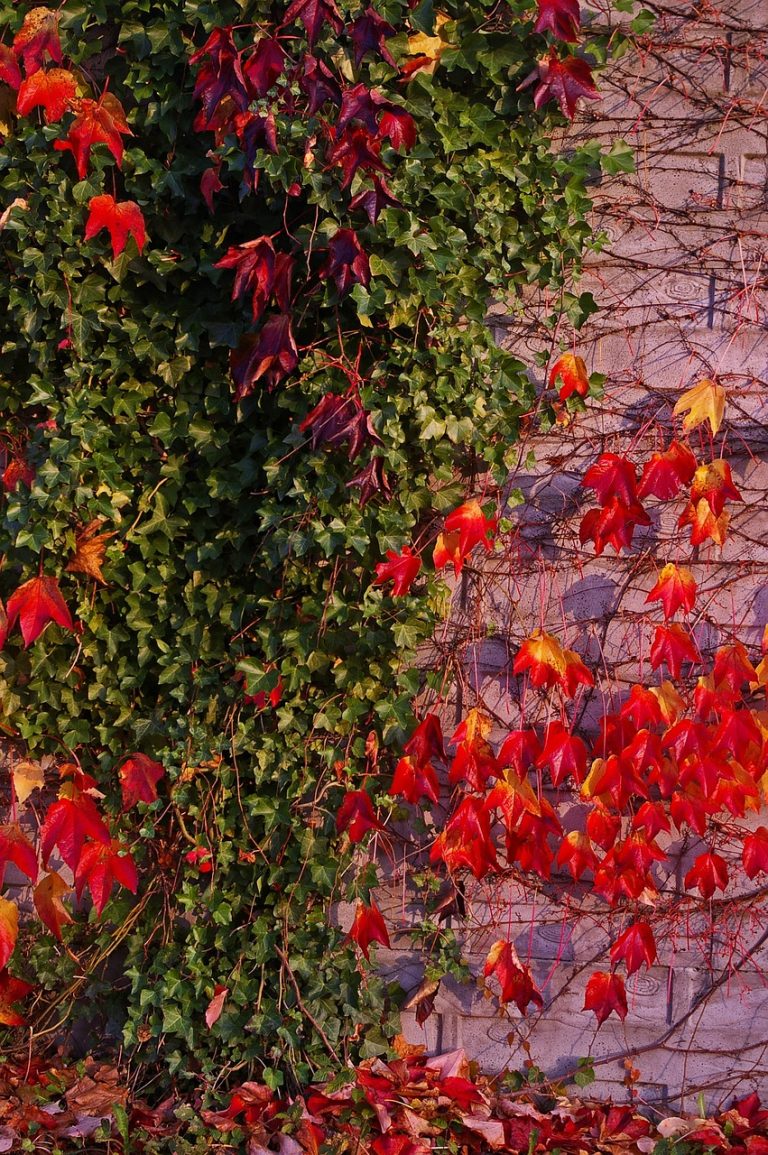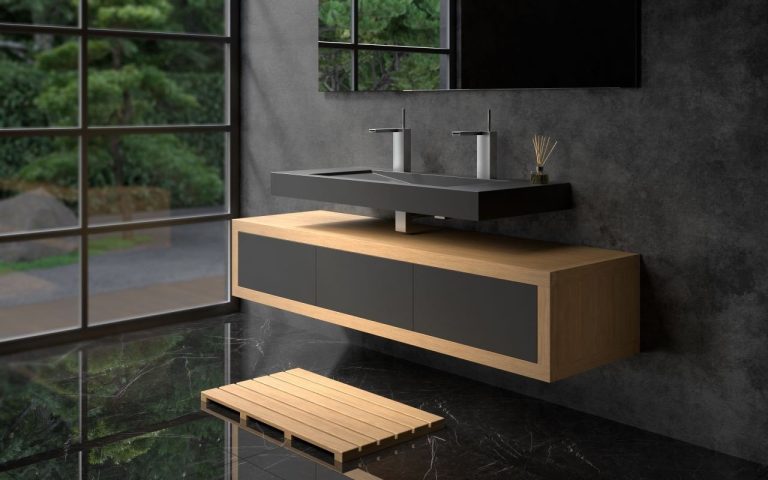So, you’ve been dreaming of adding a beautiful garden pond or a mesmerizing water feature to your backyard in the UK? Well, you’re in luck! Building your own DIY garden pond or water feature may seem like a daunting task, but with a little guidance and some handy tips, you’ll soon be on your way to creating a serene oasis right at home. In this article, we’ll explore the steps and considerations involved in building a DIY garden pond or water feature that will not only enhance the aesthetic appeal of your outdoor space but also provide a soothing environment for relaxation and enjoyment. Get ready to unleash your creativity and embark on an exciting journey to transform your garden into a tranquil haven.
Table of Contents
TogglePlanning and Designing Your Garden Pond or Water Feature
Assessing the available space
Before starting any pond or water feature project, it is essential to assess the available space in your garden. Consider the dimensions, shape, and location of the area where you plan to build your pond. Take into account any existing structures, trees, or underground utilities that may affect the layout and design of your water feature.
Deciding on the type and size
The type and size of your garden pond or water feature depend on your preferences and the available space. You can choose between a traditional pond with a liner or a pre-formed pond that is ready to install. Consider your budget, maintenance requirements, and desired aesthetic appeal when deciding on the type and size of your water feature.
Determining the location
Choosing the right location for your garden pond or water feature is crucial for its long-term success. Factors to consider include sunlight exposure, proximity to trees (which can cause debris and shade the pond), and ease of access for maintenance and enjoyment. Find a spot that complements your garden’s overall design and enhances the overall ambiance.
Considering access to electricity and water
When planning your garden pond or water feature, it is essential to consider access to a power source for pumps, filters, and lighting. Ensure that you have a nearby electrical outlet or plan to install one to meet these needs. Additionally, access to a water source for filling and topping up your pond is important to keep it healthy and thriving.
Creating a sketch or blueprint
Creating a sketch or blueprint of your garden pond or water feature allows you to visualize the final result and fine-tune the design. Include details such as the dimensions, placement of plants, rocks, and other elements. This blueprint will serve as a guide throughout the construction process and will help you make informed decisions regarding materials and placement.
Preparing the Ground
Marking the area
Once you have decided on the location and size of your garden pond or water feature, mark the area using stakes, string, or spray paint. This will help you visualize the boundaries and ensure that you dig the foundation in the correct location.
Removing any existing vegetation or obstacles
Before starting the excavation process, clear the area of any existing vegetation, roots, rocks, or other obstacles. This will provide a clean canvas for your water feature and prevent future problems such as unwanted plant growth or damage to the liner.
Leveling the ground
For a stable and visually appealing pond or water feature, it is important to level the ground. Use a rake or shovel to remove any high spots and fill in any depressions. A level is a useful tool to ensure a flat and even surface.
Digging the foundation
Using a spade or an excavator, dig the foundation of your garden pond or water feature based on the dimensions determined during the planning stage. The depth of the excavation will depend on the type of water feature and the desired water level. Take into account any slopes or variations in the terrain for proper drainage.
Checking for utility lines
Before digging, it is crucial to check for any underground utility lines such as electrical, water, or gas pipes. Contact your local utility companies or utilize utility mapping services to mark the location of these lines to avoid any accidents or disruptions.
Choosing the Pond or Water Feature Materials
Selecting a liner or pre-formed pond
When it comes to choosing the materials for your garden pond or water feature, you have two primary options: a liner or a pre-formed pond. Liners offer flexibility in shape and size, allowing you to create a custom design. Pre-formed ponds are more convenient as they come ready-made and require less construction. Consider the pros and cons of each option based on your personal preferences and budget.
Deciding on the edging material (stones, bricks, etc.)
The choice of edging material can significantly impact the visual appeal and integration of your garden pond or water feature with the surrounding landscape. Popular options include natural stones, bricks, or wooden borders. Select a material that complements your garden’s style and ensures a secure and stable structure.
Considering filtration and pumping systems
To maintain the water quality and clarity of your pond or water feature, filtration and pumping systems are essential. Research different options and consider factors such as the size of your water feature, the volume of water, and the desired level of maintenance. Decide whether you want a biological, mechanical, or combination filtration system to suit your specific needs.
Choosing aquatic and marginal plants
Aquatic and marginal plants play a vital role in creating a balanced ecosystem within your garden pond or water feature. Choose a variety of plants such as water lilies, iris, pickerelweed, or rushes to provide aesthetic appeal, oxygenation, and habitat for aquatic life. Ensure that the plants you select are suitable for the size of your water feature and the local climate.
Selecting suitable fish (if desired)
If you wish to add fish to your garden pond, consider selecting suitable species that can thrive in your climate and the size of your water feature. Popular choices include goldfish, koi, and various native fish species. Take into account factors such as water depth, temperature tolerance, and compatibility with other aquatic life.
Installing the Pond or Water Feature
Laying the pond liner or placing the pre-formed pond
For a pond with a liner, carefully lay it in the excavated area, smoothing out any wrinkles or folds. Ensure that it covers the entire perimeter and extends beyond the edges to create a secure barrier. If using a pre-formed pond, carefully place it in the designated spot, ensuring it sits level and fits snugly.
Creating a stable base for the feature
To provide stability for your garden pond or water feature, create a base using sand, gravel, or a concrete slurry mix. This will help prevent shifting or sinking over time. Compact the base material and ensure it is level before proceeding to the next steps.
Filling the pond with water
With the liner or pre-formed pond in place, fill it with water slowly and evenly. This will help prevent damage to the liner and ensure a proper water level. As the water fills, periodically adjust the liner or pre-formed pond to ensure a smooth and even finish.
Positioning and connecting the filtration and pumping systems
Once the pond or water feature is filled, position the filtration and pumping systems according to the manufacturer’s instructions. Ensure that they are securely connected and functioning properly. Test the systems to confirm water circulation, filtration, and aeration.
Adding rocks, stones, and edging to enhance aesthetics
To enhance the aesthetics of your garden pond or water feature, add rocks, stones, or other decorative elements around the edges. This will provide a naturalistic appearance and create visual interest. Be mindful of the weight and size of the materials to avoid damaging the liner or pre-formed pond.
Adding Plants and Aquatic Life
Acquiring and placing aquatic plants in appropriate areas
Acquire aquatic plants from a reputable nursery and carefully place them in the appropriate areas of your pond or water feature. Consider the depth requirements and sunlight preferences of each plant. Utilize plant baskets or planting shelves to ensure proper placement and growth.
Adding floating plants like water lilies
Floating plants, such as water lilies, can add beauty and shade to your garden pond or water feature. Gently place them on the water’s surface, ensuring they have enough space to thrive. Monitor their growth and trim as needed to maintain an optimal balance.
Introducing fish or other aquatic life
If you have chosen to include fish or other aquatic life in your water feature, introduce them gradually to allow them to acclimate to their new environment. Follow recommended guidelines for introducing fish, such as slowly adjusting water temperature and monitoring water quality parameters. Provide suitable hiding places and ensure a balanced diet for the well-being of the aquatic life.
Monitoring water quality regularly
Regular monitoring of water quality is essential for the health and well-being of your garden pond or water feature. Test the water regularly for pH levels, ammonia, nitrate, and nitrite levels. Make adjustments as necessary to maintain optimal conditions for the plants and aquatic life.
Troubleshooting common plant and fish issues
In the event of common plant or fish issues, such as disease, algae overgrowth, or nutrient imbalances, take timely action to address the problem. Research and consult with experts to identify the cause and determine the appropriate course of action. Implement preventive measures such as regular cleaning, pruning, and maintenance to minimize potential problems.
Maintaining the Pond or Water Feature
Cleaning and removing debris regularly
To keep your garden pond or water feature clean and visually appealing, regularly remove debris such as fallen leaves, twigs, and excess plant material. Use a pond net or skimmer to skim the surface and remove floating debris. Clean out any accumulated sludge or detritus from the bottom of the pond for optimal water quality.
Trimming and dividing plants as needed
As aquatic plants grow, they may require trimming or dividing to maintain a balanced ecosystem. Trim or remove any dead or decaying plant matter to prevent it from affecting water quality. Divide and replant overgrown plants as needed to maintain a harmonious and aesthetically pleasing balance.
Controlling algae growth
To keep algae growth in check and maintain water clarity, implement strategies such as adding aquatic plants that compete with algae for nutrients, providing adequate shading, and using algae control products if necessary. Regularly clean filters and perform water changes to dilute excess nutrients and discourage algae growth.
Monitoring and adjusting water pH and chemical levels
Regularly monitor the water pH and chemical levels, including ammonia, nitrite, and nitrate, to ensure a healthy environment for your aquatic life. Adjust the levels as necessary using appropriate water treatments or additives. Follow the manufacturer’s instructions and consult with experts if needed.
Preparing for winter and handling seasonal changes
Before winter arrives, take necessary steps to protect your garden pond or water feature. Remove any delicate or sensitive plants and bring them indoors. Install a pond heater or aerator to prevent the water from freezing completely, which can be harmful to aquatic life. Adjust feeding schedules for fish and prepare for seasonal changes in plant growth and maintenance requirements.
Enhancing the Water Feature with Accessories
Adding a fountain or waterfall feature
Enhance the visual appeal and auditory experience of your water feature by adding a fountain or waterfall feature. These elements can provide a sense of movement and tranquility while enhancing overall aesthetics. Choose a design that complements the size and style of your garden pond or water feature.
Installing underwater lights for nighttime appeal
Installing underwater lights can transform your garden pond or water feature into a captivating focal point during the nighttime hours. LED lights are energy-efficient and provide various color options to suit your desired ambiance. Ensure that the lights are securely installed and that the wiring is properly protected.
Incorporating stepping stones or a bridge
To create a sense of exploration and interaction, incorporate stepping stones or a bridge within your garden pond or water feature. This not only adds aesthetic value but also provides practical access for maintenance and enjoyment. Choose materials that are durable, slip-resistant, and able to withstand various weather conditions.
Incorporating seating or a relaxation area nearby
To fully enjoy your garden pond or water feature, consider incorporating seating or a relaxation area nearby. This can be a cozy bench, outdoor sofa, or even a hammock. Select furniture that is weather-resistant and provides a comfortable space to sit back, relax, and enjoy the soothing sounds and sights of your water feature.
Integrating a filtration system for a clear, clean pond
If you haven’t already, consider integrating a filtration system into your garden pond or water feature to maintain water clarity and cleanliness. Choose a system that suits the size and needs of your water feature, ensuring it effectively removes debris and promotes a healthy ecosystem. Regularly clean and maintain the filtration system to optimize its performance.
Creating a Wildlife-Friendly Pond
Including shallow areas for wildlife access
To attract and support local wildlife, create shallow areas within your garden pond or water feature. These areas provide easy access for small animals such as birds, frogs, and insects to drink water, bathe, and find shelter. Vary the water depth to accommodate different species and include gently sloping edges for safe entry and exit.
Using native plants to attract local wildlife
Native plants are excellent choices to attract local wildlife to your garden pond or water feature. They provide food, shelter, and breeding grounds for a variety of insects, birds, and amphibians. Research which native plant species are suitable for your region and incorporate them into your water feature to create a thriving ecosystem.
Providing rocks and logs for amphibians and insects
Amphibians and insects often seek refuge in and around rocks and logs. Incorporate these natural elements into your garden pond or water feature to create inviting habitats. Ensure that the rocks and logs are securely positioned and do not disrupt the overall stability and safety of the water feature.
Avoiding harmful chemicals and pesticides
To create a wildlife-friendly pond, it is important to avoid using harmful chemicals and pesticides. These substances can harm or even kill the beneficial organisms that contribute to a healthy ecosystem. Instead, opt for natural, environmentally-friendly alternatives to control pests or manage water quality.
Creating a safe escape route for animals
Ensure that your garden pond or water feature has a safe escape route for animals that accidentally fall in. Include sloping edges, shallow ledges, or a dedicated ramp to allow animals to climb out of the water easily. This will prevent potential harm or drowning and contribute to the overall safety of the wildlife in your water feature.
Adding Safety Measures
Installing a pond cover or netting
To ensure the safety of children and pets, consider installing a pond cover or netting. This will prevent accidental falls into the water feature and provide peace of mind for parents and pet owners. Choose a cover or netting that is secure, durable, and designed specifically for pond safety.
Keeping the water feature secure for children and pets
In addition to a pond cover or netting, it is important to keep the water feature secure for children and pets. Consider installing appropriate fencing or barriers around the perimeter of the water feature to restrict access. Ensure that gates or entrances are self-closing and latching to prevent unauthorized entry.
Using appropriate fencing or barriers
The choice of fencing or barriers around your garden pond or water feature depends on your personal preferences and the overall design of your garden. Options include wooden picket fences, metal railings, or mesh enclosures. Select a style that both complements your garden’s aesthetic and effectively prevents unwanted access.
Ensuring proper visibility of the pond from different angles
Maintain proper visibility of your garden pond or water feature from different angles to monitor activity and ensure safety. Trim any overgrown foliage or branches that obstruct the view. Consider strategic placement of seating areas or windows to provide optimal visibility and allow for visual enjoyment of the water feature.
Placing warning signs if necessary
If your garden pond or water feature poses potential risks, it may be necessary to place warning signs. For example, if the water is deeper than 30cm, or if there are some aspects that may be dangerous to children or pets. Clearly display these signs near the water feature to alert visitors and prevent accidents.
Seeking Professional Help or Advice
Consulting with a pond specialist or landscaper
If you are unsure about any aspect of building or maintaining your garden pond or water feature, consider consulting with a pond specialist or landscaper. These professionals have the expertise and experience to provide valuable guidance and ensure the success of your project. They can offer advice on design, materials, filtration systems, and more.
Engaging with local garden or wildlife organizations
Local garden or wildlife organizations can be excellent resources for advice and inspiration when building a garden pond or water feature. They often offer educational programs, workshops, and forums where you can learn from experienced enthusiasts and gain insights on designing and maintaining your water feature in alignment with local ecosystems.
Attending workshops or classes on pond construction
Attending workshops or classes on pond construction can provide you with hands-on experience and valuable knowledge. Look for local garden centers, universities, or community centers that offer courses or events focused on pond construction and maintenance. Take advantage of these opportunities to expand your skills and connect with like-minded individuals.
Considering hiring professionals for specific tasks
Depending on your skill level and the complexity of your project, you may decide to hire professionals for specific tasks. This can include excavation, electrical work, or specialized construction. Research and obtain quotes from reputable contractors in your area to ensure quality workmanship and adherence to professional standards.
Seeking guidance from experienced pond owners
Reach out to experienced pond owners in your community or online forums for valuable insights and advice. They can share their personal experiences, dos and don’ts, and tips for successful pond construction and maintenance. Engaging with this supportive community can provide you with valuable support throughout your journey of building and enjoying your garden pond or water feature.
Remember, building and maintaining a garden pond or water feature is a rewarding and creative endeavor. Take your time, plan thoroughly, and stay open to learning and adapting along the way. By following these steps and being mindful of the needs of your aquatic and wildlife inhabitants, you will create a beautiful and vibrant oasis right in your own backyard.

